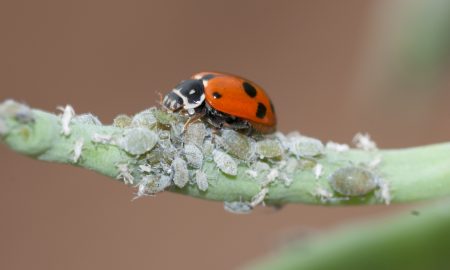Etiella moths emerge in spring and can be damaging for lentil and lucerne crops. SARDI’s degree-day Etiella model can be used to predict the timing of flight activity to determine when to monitor.
A sporadic pest
Etiella, aka lucerne seed web moth (Etiella behrii) is widespread throughout Australia. Although they only occur sporadically, and we haven’t seen large numbers in southern Australia in the last few years, when they are present they can be a very serious pest of agricultural crops.
The larvae predominantly target lentils and lucerne, but can also be found in lupins, field peas, peanuts, soybeans, vetch, medics and clovers.
Spring emergence
After waking from their pupal stage in the mild weather during September and October, female moths will lay their eggs on developing pods, stems and flowers in susceptible legume crops, particularly lentils.
Within 24 hours of hatching, the immature larvae will work their way into the pods, where they will feed on the developing grain. Being buried into the pods also means that larvae are sheltered from insecticides.
The larvae won’t emerge from the pods until they are ready to pupate in the soil, by which time damage has been done to the developing grain.
When to begin monitoring for Etiella moths
To prevent Etiella damage, moths must be targeted before egg lay during September and October.
To support monitoring efforts and to help achieve a well-timed spray in lentils, an online tool called the Etiella degree-day model has been developed by SARDI.
The model uses local temperature data to from 21 June onwards to forecast the flight activity of Etiella moth.
Degree-day accumulations of 351 is the point at which 10% of flight activity is predicted to have commenced.
It is recommended that monitoring begins at 300 degree-day accumulations.
With the SARDI Etiella degree-day model, users can input their location and can keep an eye on when their region is approaching 300 degree-days. Users can also compare the current year with previous years.
How to monitor
Ideally, crop monitoring should begin before 1 or 2 weeks before the cumulative total of degree-days first reaches 351 as determined by the model.
To monitor for Etiella moths use a sweep net at least once a week during podding (green crops only – dry crops aren’t at risk). A minimum of 3 lots of 20 sweeps should be randomly undertaken within each crop.
The recommended threshold is 1-2 Etiella moths in 20 sweeps.
At rest, adult Etiella have a long and slender in appearance, and are 10-15 mm long. They are greyish brown in colour with a tan band that runs across the forewings and a white strip that runs the full length along the outer edge of the forewings. Also, look out for the snout-like beak, which protrudes forward from the head as a key feature.
Cover image: Photo by SARDI





